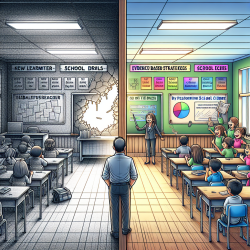Understanding the Impact of Active Shooter Drills
Active shooter drills have become a staple in American schools, with 95% of public schools implementing them during the 2015-2016 school year. However, recent research highlighted in the Journal of Adolescent Health raises concerns about the emotional impact of these drills on students and questions their overall effectiveness.
Emotional Distress and Perceptions of Safety
According to Moore-Petinak et al., a significant portion of students report feeling unsafe, scared, or sad after participating in active shooter drills. The study found that while 58% of students believe these drills teach them what to do in an emergency, they are unsure of the drills' ultimate benefit. This uncertainty, combined with emotional distress, suggests that the current implementation of these drills may not be achieving their intended outcomes.
Challenges in Implementation
The research also identifies challenges in the fidelity of implementing evidence-based active shooter drill strategies. Schools often only partially implement these strategies, which may contribute to the emotional distress reported by students. Additionally, there is concern that these drills could inadvertently inform potential shooters about the actions schools might take during an incident.
Opportunities for Improvement
To address these concerns, practitioners can focus on several key areas:
- Comprehensive Approaches: Develop more comprehensive approaches that complement active shooter drills, focusing on both individual and systems-level interventions.
- Behavior Monitoring: Monitor patterns of behavior to identify vulnerable students early and connect them with appropriate services.
- School Climate: Foster a strong school climate that promotes trusting and positive relationships among faculty, staff, and students.
- Social-Emotional Learning: Implement social-emotional learning programs to help students develop skills to handle life challenges effectively.
Recommendations for Practitioners
For schools that continue to conduct active shooter drills, it is crucial to follow evidence-based guidance. This includes avoiding drills that simulate actual incidents, notifying all stakeholders in advance, and ensuring content is age-appropriate. Additionally, combining drills with support systems to address student well-being and evaluating their effectiveness are essential steps.
Advocacy and Policy Changes
Beyond school-level interventions, community and public policy efforts play a critical role. Advocacy groups continue to push for legislative changes to address gun violence and limit gun access. Learning from international examples, such as Japan's stringent gun control policies, can provide insights into effective strategies for reducing gun violence.
Practitioners are encouraged to stay informed and engaged with ongoing research and policy discussions to enhance their skills and contribute to safer school environments.
To read the original research paper, please follow this link: Active Shooter Drills: A Closer Look at Next Steps.










